
32 minute read
Sustainability
Finding a Better Way
Cannabis & Tech Today’s 2020 Sustainable Leadership Award winners share their advice for creating a more resilient industry.
By Ebby Stone
What does sustainability mean to you? For Cannabis & Tech Today, it means fostering an industry that will thrive while preserving the natural resources necessary for continued growth. For 2020’s Sustainable Leadership Awards, we chose three applicants setting the standard for sustainable energy consumption, packaging, and stewardship. Graham Farrar, president and chief cannabis officer for Glass House Group, discusses why environmental stewardship is central to his company’s mission. Brain Domann, sales and marketing director for Humidi shares solutions to the industry’s packaging problem. And Derek Gould, director of marketing and communications for Solar Therapeutics invites you to join him in creating a more eco-friendly future. In this special feature, we’ll shine a spotlight on how they’re leading the charge, what’s most important to them, and how all companies, big or small, can work toward more sustainable operations.
Glass House Group President and Chief Cannabis Officer Graham Farrar
Cannabis & Tech Today: What is Glass House Group’s approach to sustainability?

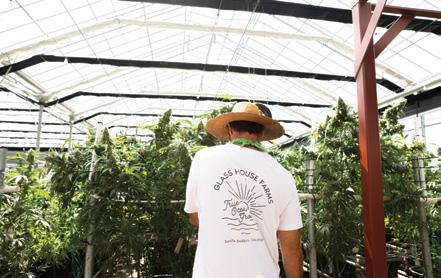
Graham Farrar: We try to really advocate for this low-touch agricultural approach we practice. Cannabis in agriculture is a bit of an outlier, in that it’s a highlyregulated business with a lot of friction, a lot of costs, but you’re not in the single-digit margin percentage like a lot of ag is — where they’re really struggling to stay alive — which allows us to do things like invest in using beneficial insects instead of pesticides.
There’s a positive circle that starts with that, which is, if we spend twenty grand a month with the beneficial insect’s guys, and then some other companies do, and then the [insect company] can scale up. As they get bigger, the price comes down, and then maybe now it’s available to the tomato guys because they can afford it now — and then the tomato [industry] is 1000 times bigger than cannabis. So if that industry can take even just a little bit, the size of it makes it that much bigger, and then the insect’s price comes down and then more people can get access to it. So you can start this virtuous cycle. I think cannabis can help blaze that path for the rest of agriculture, which will end up making a lot more difference than we do.
Humidi Sales and Marketing Director Brian Domann
C&T Today: How is Humidi helping tackle some of the industry’s environmental issues?
Brian Domann: What we really sought for and our ultimate goal has always been, how can we have a net positive impact on the environment? And while we initially wanted to incorporate hemp into our packaging, we also really needed to have a strong product that would be durable and have the shelf life of a traditional product and provide that same protection, integrity for the cannabis, or any of the products that are stored in our packaging. And that’s why, ultimately, we went with canolabased bio plant materials.
It is the only product on the market that can be fully compostable in a home compost heap. There are no microplastics leftover and the product will act as a food source for bacteria that are naturally occurring in the soil.
C&T Today: How do you envision the future of cannabis packaging?
BD: I’d love to envision the future being a net-zero impact on environmental production, which it’s always hard to get there. But I
think if the cannabis market can lead the charge against plastic pollution and show what’s possible and what can be done for some of these mass packaging markets or consumer packaged goods in general.
#customizable
There are sustainable products out there that are not truly as sustainable as folks think. And the one biggest thing that we’re really trying to articulate, from an education standpoint to an end consumer or a distributor, is that this is the first product that has 0% plastic. There’s not a trace of plastic in these products.

Solar Therapeutics Director of Marketing and Communications Derek Gould
C&T Today: How does Solar Therapeutics incorporate sustainable practices into its ethos?
Derek Gould: The way we’ve incorporated and implemented green infrastructure into our entire facility and its operations is huge. We’re a fullblown power plant. We’re generating about 5.4 megawatts. One megawatt can power about a thousand small homes.
Our vision and mission is to replicate what we have here in Massachusetts and demonstrate that in other States. It’s a very arduous process to source these sustainability components, especially when you’re talking about the size of the facility that we’re working in.

But, I think being a responsible corporate citizen is crucial. When you are looking at the statistics, indoor cannabis cultivation is trending towards being the second most unsustainable industry in the country — and that’s behind data storage centers. I think, to take a conscious approach, to make changes even though it costs more upfront, to start implementing those things and demonstrate how to be a leader in the space — and it’s not too late, it’s actually very early and we can make this happen — is major for us.
We really want to plant our flag and be the first multi-state operator that’s touting these carbon emissions percentages that are above and beyond. If we could be at 90% emissionsfree, that would be huge; 50 to 60% is where we’re operating right now. I think it’s key, if this industry is to continue to operate and be responsible, you really have to start pivoting and implementing these sustainable approaches.
would you offer operators looking to become more sustainable?

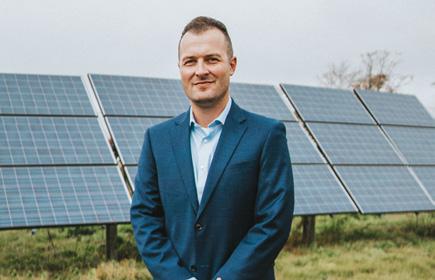
DG: You don’t have to go all-in on sustainability right off the bat. There’re a lot of lowhanging fruit and very easily implemented, inexpensive ways, and procedures that can make your facility at least start to be a little bit more sustainable. It’s imperative we start really considering this approach to cultivating cannabis. We’re going to start seeing more states crack down on thresholds for sustainable practices for indoor cultivators because, again, it’s such an energy hog. So, I think to have that foresight and understanding, that this is where we’re headed in this industry and for us to be a stalwart of this movement, is paramount for us. ❖
ESG and the Cannabis
Industry Growing a Competitive Advantage from Cultivation to Consumption
By Geoff Trotter
There are an increasing number of publiclytraded companies in the evolving North American cannabis sector, all vying for attention. Yet for this industry to grow, it must embrace the principles of Environmental, Social, and Corporate Governance (ESG) Frameworks and navigate the risks and opportunities inherent in ESG issues.
Corporations embrace ESG standards for a variety of reasons including access to capital, enhanced risk mitigation and value creation, greater social “license to operate,” customer acquisition, and employee retention. Greater recognition of the competitive advantage linked to this approach is increasingly making ESG a business fundamental for companies across industry sectors.
The risks of climate change have brought environmental management to the forefront as a business imperative. For the cannabis industry, energy and water stewardship are two critical environmental issues all companies must be actively managing. Estimated at approximately 40% of operational expenses, the energy required for plant cultivation, temperature control, and product manufacturing makes energy management a vital cost consideration. As global temperatures and the frequency of severe weather events rise, so will the risks associated with energy stewardship and resilience. Similarly, global water scarcity and its material impact on a wide range of industries make water stewardship a vital component to controlling costs and ensuring business continuity in the future. Cannabis companies must implement a systematic approach to environmental management and resource stewardship across the value chain, from seed to storefront.
As the multi-industrial applications for cannabis and hemp become better understood, the range of social risks and opportunities increase. From a human capital perspective, companies will need employees with a broad range of skill sets and backgrounds to capitalize on the range of potential opportunities. Developing a clear talent acquisition and retention strategy will become increasingly important. Similarly, engagement and collaboration across stakeholder groups provide a range of opportunities. From advancing economic inclusion for marginalized populations to revitalizing distressed rural farming communities, focused stakeholder engagement can mitigate reputational challenges while addressing operational needs and product commercialization.
Cannabis companies need a methodical and consistent approach to governance, especially given the rapid evolution of the industry and its regulatory landscape. A focus on governance prioritizes long-term business continuity amongst managing these risks. To manage the complexity inherent in engaging ESG issues across an enterprise, the composition of the board and management team, and their associated experiences, credentials, and effectiveness, can have a profound impact on ensuring ESG becomes a source of competitive advantage.
Regennabis and Summit Strategy Group have partnered to provide a range of services that address the most pressing risks and opportunities facing the cannabis industry and the changing business landscape at large. The approach is based on a series of specific steps that all companies should follow when developing an effective ESG program; fig. 1 highlights some of the most critical: (see Fig 1. ESG Framework: a 5-Step Process). ❖ To learn more, please contact geoff.trotter@ regennabis.com.
Fig 1
1. Understanding why ESG is critical to commercial success
• Identify the relevancy of ESG trends to your business model, industry, and stakeholder groups. • Assess the competitive landscape and expectations from your key stakeholder groups.
2. Mapping an ESG journey that leads to desired business outcomes
• A materiality assessment uncovers ESG threats that present financial risk to the business and opportunities to strengthen engagement with stakeholders. • Assess and understand what you are already doing to address these issues and clearly articulate your desired objectives moving forward. • Create a shared vision of success and engage the stakeholders most relevant to this success to participate in the process.
3. Gauge how you are being perceived
• Evaluate how you are being assessed on ESG performance. • What is your current reputation with stakeholders? What are the potential risks associated with these stakeholders? • Assess what is working well with your current reputation, what could be developed to support both perceptions of investment risk and ESG maturity, and the actions that must be taken and communicated to your key stakeholder groups.
4. Develop an ESG strategy
• Integrate material ESG issues into corporate strategy and risk management, ensuring clear targets and performance indicators are established, and the internal systems are in place to track that progress. • Embed the ESG strategy into daily operations and stand up an internal governance structure to oversee enterprise implementation.
5. Communicate and Disclose
• Determine your priority audiences and the most important stakeholders to your business. • Determine the right messages and methods for communicating this progress that speaks to the relevant issues and in the language known to your stakeholders. Identify and align around the disclosure frameworks and communications cadence preferable to your key stakeholders. • Communications, specifically with credible disclosure frameworks like SASB and TCFD, ensures the ESG strategy and accompanying narrative is clear, credible, and accurate, which in turn fortifies stakeholder trust and positively impacts corporate reputation and valuation.
Powered by Poop
How a Versatile Cow Byproduct Could Fuel a New Generation of Farmers
By David Wallach
Here’s an interesting fact for your next Zoom call “ice breaker,” an 800-pound cow will produce about 100 pounds of poop a day. There are about 9 million dairy cows in the United States at any given time, producing about 900 million pounds of poop a day. Second in volume only to the House and Senate.
It’s a lot of poop, and of course one of the results of their waste is methane. Before we all get on our Impossible Burger soapboxes, there are technologies available today that are harvesting the power of cow poop to help capture methane gasses, recycle water for farms, and even create fertilizer that is cleaner and more abundant than peat moss and other fertilizer components.
Yes, there is a peat moss shortage. Peat moss grows naturally in bogs and takes hundreds of years of erosion and decomposition to create. When it comes to growing cannabis, peat moss is an excellent soil component. Using peat moss to grow things isn’t news, even that very “green” Impossible Burger is “plant based.” The root word “plant” meaning it also comes from the ground and needs, you guessed it… fertilizer.
The availability of high-quality fertilizer like peat moss is on the decline. As farmers look for fertilizer that can help grow quality crops, cow poop could provide the solution by the way of a 200-year-old technology called the anaerobic digester.
Subsidizing Sustainability
In 1808, Sir Humphrey Davy discovered that the methane in cow manure could be used to create renewable energy. 200 years later farmers around the country have installed “digesters” on their land to help subsidize declining profits as well as reduce their farm’s ecological footprint.
Anaerobic digesters can help curtail methane release by burning the gas and converting it to carbon dioxide. A digester captures the methane before it has a chance to escape into the atmosphere in its pure form. Digesters do more than generate a sustainable source of electricity, they also reduce greenhouse gas emissions.
Landon Van Dyk from Van Dky-S Holsteins Dairy Farm walks us through the science of poop power. “If we can capture the methane rather than just allowing it to vent to the atmosphere, we can utilize it for beneficial purposes.”
The Vander Haak Dairy Farm in Lynden, Washington was the first in the state to install an anaerobic digester. Owner Steve Vander Haak noted, “We’re producing clean renewable energy. We look at the digester as an opportunity to diversify our farm, do good things for the environment, and be able to keep farming.”
Filling the Tank
If you go back to the math portion of this article, the Vander Haaks’ 500 cows produce a lot of poop, the digester converts their manure, plus food waste from nearby
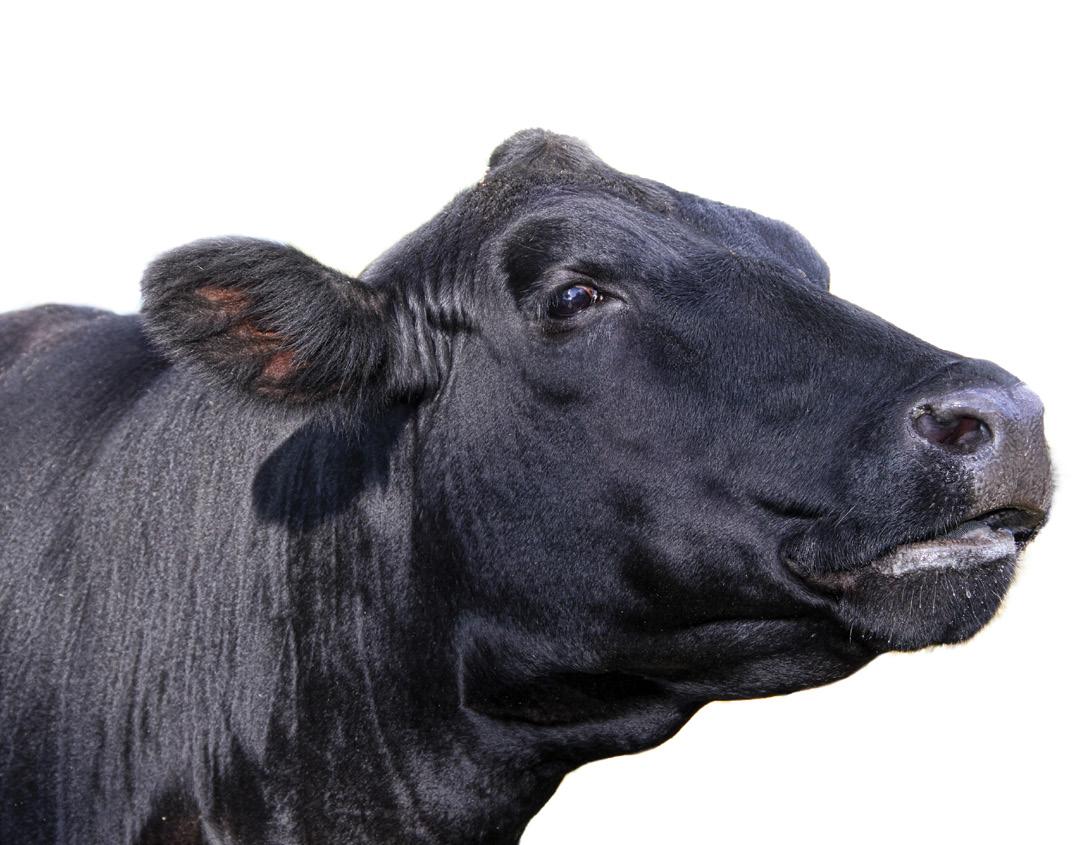


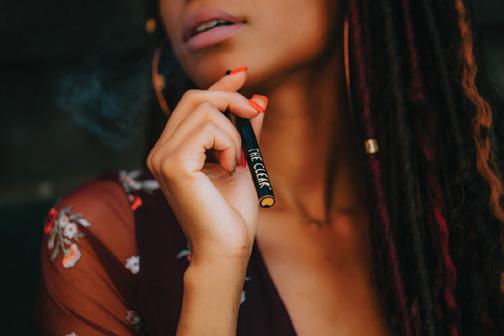
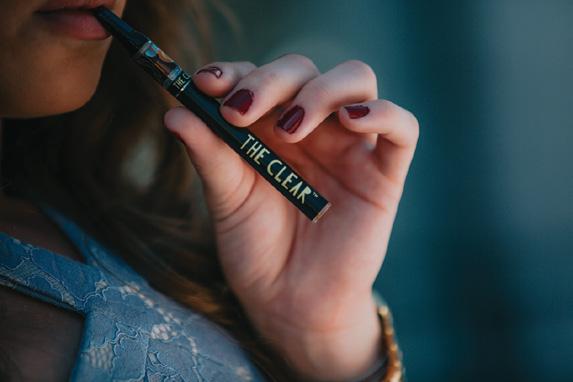

Anaerobic digesters are preventing more methane from being released into the atmosphere, as well as creating a sustainable form of fertilizer for the cannabis industry.
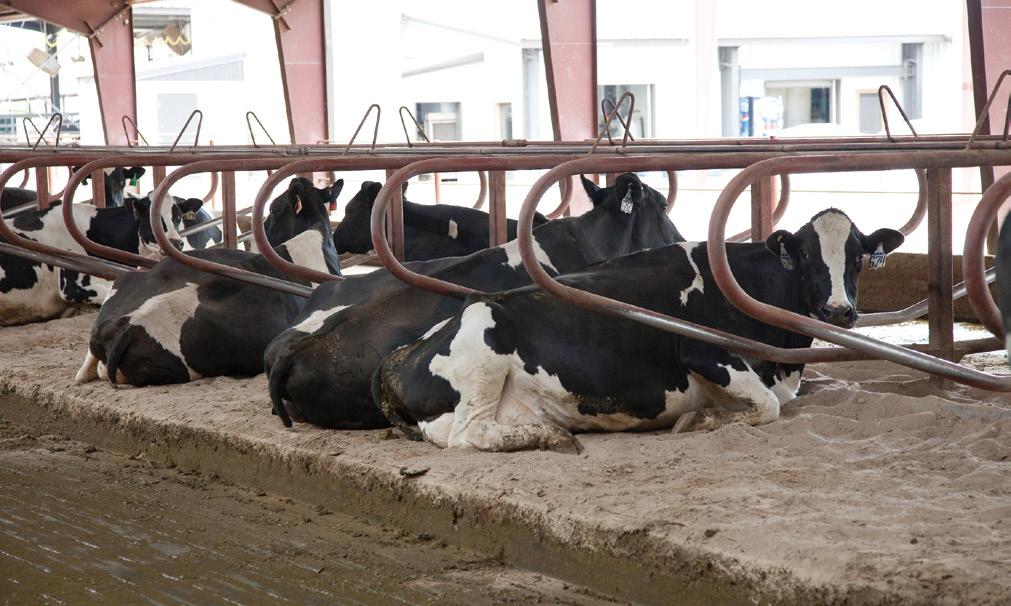
food processors, into energy and other saleable products. Restaurants and stores all are able to dump their outdated and spoiled food into the digester instead of a landfill.
Think of the digester as an extension of the cow stomach, it’s a big concrete tank 16 feet in the ground where farmers put manure and food waste, then heat it up to 100 degrees. It starts with the cows that produced the manure, farmers gather that up and bring it to the digester, where methane gas is produced and a generator turns it into electricity, returning it back to the grid.
Van Dyk explains an incredibly complex process in as simple terms as possible. “We collect the manure and add it to our digester. At that point, the bugs that were working in the gut of the cow to break down the complex organic bonds continue to act the same way in the digester. They’re breaking down that energy, creating methane, and they also reduce that fertilizer value from a complex, somewhat unavailable organic material to an inorganic material that’s readily available to plants.
A Versatile Byproduct
Cliff and Andrea Sensenig have a much smaller dairy farm of about 100 cows in Pennsylvania, which isn’t enough to make a digester profitable, as Andrea Sensenig explains. Instead of abandoning their idea, they reached out to other farmers in the community. “We were able to add pigs and chickens. Where you see poop, we see a recycling opportunity. We also add some food waste into the mix to create methane gas and then capture that gas, pipe it into an engine, and it creates electricity. We’re producing enough electricity to power this farm and 140 additional homes.”
More than methane, it’s an abundance of clean, very rich fertilizer that when mixed with soil can provide farmers and cannabis cultivators the materials they need to grow, while at the same time helping the environment by recycling… poop.
“Through the process… we would separate the liquid from the solids and use the liquid as a fertilizer. It is actually a good fertilizer because it’s more readily available than straight cow manure, so when you apply it you get a faster reaction than you would putting on manure,” says Van Dyk.
Andrea Sensenig adds “The food waste we’re getting right now is coming from large chain grocery stores. If we weren’t adding the food waste to our digester along with the manure, all this food waste would just be added to landfills. What we’re doing is landfill diversion.”
Cows for Cannabis
Van Dyk farms potatoes but explains how using soil from a digester could work for the cannabis industry. “The pathogens that are in the [digester] manure are essentially very low, they are significantly reduced from regular cow manure.”
While anaerobic digesters are still few and far between, they are providing a solution that helps prevent more methane from being released into the atmosphere, as well as creating a sustainable form of fertilizer the cannabis industry can turn to as a resource for fertilizer.
To Vander Haak it goes much deeper than that. “If farmers weren’t concerned about sustainability and conservation, there would not be the safe food supply we have today. I want my kids to have the opportunity to follow in my footsteps, in my dad and grandpa and great grandpa’s footsteps. The land is one of our resources and we need to be able to use that land both now and in the future.” ❖
Image courtesy of Dairy Management Inc.

Vegan Edibles for an Eco-Friendly High
By Sam White
The legal cannabis industry and the vegan food industry have arguably had the best glowups of the last five years. Speaking from my personal experience, I can confidently say 2021 will be a great year for both vegans and cannabis users. With these two industries exploding in popularity, innovation, and accessibility, it was only a matter of time before they collided.
The demand for vegan-friendly products is at an all-time high and brands across the world are taking notice. Companies of all kinds – food, beauty, furniture, fashion – are taking steps to ensure their products are vegan, cruelty-free, and sustainable for the environment.
Cannabis brands are no exception. Many cannabis companies are now offering vegan edible selections that are appealing to an audience that abstains from eating any animal products whatsoever.
There are also incredible moves being made in the culinary cannabis world. During a time where you can infuse any dish imaginable with THC and CBD, vegan chefs are making a statement by combining their bold, creative, and cruelty-free flavors with the medicinal benefits of cannabinoids.
Several studies, including one published by Nature in 2018, show that a plant-based diet could reduce the greenhouse gas emissions of the food system by more than half. With many cannabis brands working toward becoming more sustainable and eco-friendly, taking a turn towards vegan edible products is a no brainer.
The Vegan Revolution
So what exactly does a vegan diet entail? A fully vegan diet abstains from any and all animal

products including meat, eggs, milk, cheese, dairy of any kind, honey, or any other animal derivative. Veganism differs from vegetarianism because while vegetarians don’t eat meat, they still typically eat things like eggs, dairy, honey, and depending on the individual, may not care about things like gelatin and other miscellaneous animal products.
While veganism is certainly not a new diet, it’s reached incredible new levels of popularity in the last couple of years. Veganism has become so popular that, according to Report Buyer, in 2020 6% of Americans considered themselves vegan, versus only 1% in 2014.
Millennials and Zoomers are mostly to blame for this pronounced shift in dietary lifestyle. According to a study done by Finder, Millennials were dubbed the “most plant-based generation in history” and were responsible for bringing veganism into the forefront of food-related social media and culture. Their demand created a slew of new food products in stores and restaurants that cater to the vegan consumer.
While young people make up the majority of vegan eaters, people of all ages and lifestyles are turning to a plant-based diet. And the reasons for the switch are many; some people do so for ethical reasons, some do it for the animals, some do it purely for personal taste, and others made the switch because of the many positive benefits on the environment. The animal agriculture industry is one of the largest causes of methane and CO2 emissions on Earth. In fact, the Food and Agriculture Organization of the United Nations claims it is directly responsible for a whopping 15% of global greenhouse gas emissions worldwide. Another stunning statistic shows that, in the United States alone, the animal agriculture industry uses around 30-70 trillion gallons of water every single year. It’s also one of the biggest causes of deforestation and water pollution, cutting down forests to make room for livestock and flooding local waterways with millions of tons of animal waste.
Since many cannabis users are also lovers of animals and the environment, there’s quickly become a demand for vegan edibles that are ethically sourced and sustainably produced.
Plant-Based Pot
Cannabis companies are rising to the demand and making vegan-friendly edibles. The most infamous edible of them all has to be the gummy, but since gummies (THC infused or otherwise) are made with gelatin, a derivative of animal bones and connective tissue, this makes them non-vegan. Other edibles, such as cookies, brownies, and other sweet treats, usually contain milk, eggs, or butter, none of which can be eaten on a vegan diet.
Thankfully, there are cannabis companies coming up with some delicious vegan edibles that are just as tasty and effective as their nonvegan counterparts. Brands like DRIVIN Cannabis, Bhang Corporation, and Smokiez are all getting into the vegan market with gummies, chocolates, and hard candies that are all made without using any animal products.
Another wonderful vegan-friendly company is Utopia Cannabis, a California-based company with a mission to cultivate ‘clean cannabis’ by using all organic ingredients that are free from pesticides and harmful chemicals. Utopia is known for their (absolutely delicious) THCinfused vegan macaroons, blasting the market with a uniquely healthy perspective on frequently junk-food adjacent edibles.
When asked why it was so important to make their edibles vegan-friendly, Co-Founder and Chief Executive Officer Kaiya Bercow said, “As a lifelong vegetarian, I wanted to produce a cannabis edible that would fit into a natural grocery store and match the active, healthy California lifestyle… Our coconut cookies are Kosher-certified, vegan, gluten free, low glycemic, paleo-friendly, and use all organic food ingredients. We’re proud to have a product with pronounceable and identifiable ingredients and only use cannabis oil manufactured at our extraction facility in Monterey for increased product control.”
The culinary cannabis world has also been infiltrated by the vegan lifestyle. There have already been a few cannabis cooking shows streaming on different platforms, but Amazon Prime has come out with a vegan cannabis cooking show called High Cuisine where a group of Los Angeles based vegan chefs compete to create unique and creative THCinfused vegan dishes.
If you consider yourself a bit of a chef and want to incorporate some vegan cannabis concoctions into your repertoire, The Vegan Cannabis Cookbook is a good place to start.
One of the best and most sustainable things you can do for the environment is to reduce your carbon footprint by ditching meat and dairy products. It’s also important for companies, cannabis companies included, to reduce their emissions by developing products that are produced in more sustainable ways. Ensuring their products are vegan is a great way to do that. It’s also important as consumers that we let these companies know there is a demand for vegan products.
With more people going plant-based every year, we’re sure to see greater heights of vegan innovation within the cannabis world in the near future. It’s only a matter of time before an all-vegan cannabis company is born and takes over the cannabis world with a mission to make delicious cannabis-infused treats as sustainable, eco-friendly, and cruelty-free as possible. ❖

…and the Winner is?
Highlighting the companies striving to be the next big name in sustainable cannabis.
By Corey Noles
Four businesses attended the Winter Emerge 2020 Virtual Cannabis Conference & Expo with high hopes. They were competing in the Investor Pitch Contest hosted by Leafwire and Regennabis. Each business gave its best pitch in hopes of gaining access to a $5 million funding pool managed by Regennabis.
In order to qualify and win, the companies had to show a comprehensive plan that included a focus on sustainability in the cannabis industry. Each was given the opportunity to make a 4-minute pitch, followed by a 4-minute question and answer period with potential investors.
Geoff Trotter, co-founder of Regennabis, and Peter Vogel, CEO and co-founder of Leafwire, moderated the event. Out of the four presentations came four very distinct and unique ideas.
Just BioFiber
Just BioFiber was the event’s clear winner with a project that has global implications environmentally and financially. Dave Ladouceur, CEO of Just BioFiber, explained that the company produces a truly sustainable building solution. The company produces custom building blocks comprised of hemp fiber combined with a proprietary lime slurry mix to create one of the most sustainable building materials in the market.
Hemp agriculture can produce 250% more fiber than cotton and 600% more fiber than flax on the same amount of land. Hemp processing uses one-tenth of the energy that it takes over years and years to fully develop a forest for timber construction.
Ladouceur said the company desperately needs to expand its factory to increase production. He added the company is losing out on millions in business right now because it simply cannot keep up with demand.
“We’ve had to stop taking orders,” he said. “There’s backlog because the company is too small to keep up with demand. A 3-5 million annual block production facility could net a substantial profit.”
An investment would allow Just BioFiber to stabilize the company, work off the sales backlog and stop turning away orders, become cash flow positive in Q3 2021, and allow them to upgrade their pilot plant to handle 20,000 bricks per month.
“It’s an environmental gem that will be a great solution for the people, the planet, and prosperity,” Ladouceur said. Another benefit to the fiber blocks is that construction time for the envelope is cut drastically. The time needed to frame a 2,000 sq. ft. home is about half the time of traditional wood-frame construction.
The blocks also offer a substantial increase in safety. They have a two-hour fire rating at 1,800 degrees. “These things will not catch fire,” Ladouceur said. “We’ve tried with torches directly heating them and nothing. No smoke. No fire.” One judge pointed out that could make the blocks very desirable for places like California where wildfires are a way of life.
They can also withstand up to 250+ mile per hour winds. The pandemic hit Just BioFiber particularly hard, which is why the company entered the contest. A $30 million investment to take the company global was called off in early 2020 as the pandemic sent life to a screeching halt.
“The company licked its wounds and pushed forward,” he said. After naming Just BioFiber as the winner, Trotter said the next steps in the process would follow close behind.


“I will be working with each of the investors as a follow-up with Peter [Vogel] to see what opportunity there may be to reach out with each of you for an even longer conversation,” Trotter said. “One that gets into the guts of your businesses to give you really a fair crack at an investment.”
Feel State Inc.

In third place was St. Louis, MO-based Feel State Inc. CEO David Melnick made the company’s pitch. Feel State is offering a franchise option for cannabis dispensaries.
The Feel State licensing system is designed to offer a turnkey solution for business owners looking to delve into the cannabis space.
“We’re giving people new to the industry a way to take the guesswork out of opening a dispensary,” Melnick said. “We’ll provide our partners with the tools needed to succeed.” Feel State will open its first dispensary in St. Louis this spring. The company is finalizing additional deals in Missouri, Oklahoma, and Colorado.
Judges for the competition were Codie
Sanchez, managing director and partner of
Entourage Effect Capital; Emily Paxhia, cofounder and managing partner for Poseidon
Asset Management; Kellie Seringer, portfolio manager at Symmetry Capital Management,
LLC; and Lindsay Blackett, CEO of PeakTerra Ventures Inc.
The next Investor Pitch Contest will take place during Spring 2021 Emerge on March 30-April 1, 2021. Visit emergecanna.com for tickets and for more information on the contest. ❖
Gladbrook Holdings
Coming in second place was Gladbrook Holdings of Long Beach, CA. Warren Blesofsky, president and co-founder, made the presentation.
Gladbrook holds a variety of assets in the cannabis space, including both real estate and retail sales. The project for which the company is seeking investors is its Dial It In subscription service. Dial It In is a medical marijuana subscription service that will deliver your specific, regular order directly to your door.
“When the big money came into California, it rushed for recreational marijuana,” Blesofsky said. “It left the medical market mostly neglected.” That space is where he feels Dial It In could provide a valuable service. He said the company will use all-electric automobiles and is developing truly sustainable packaging.
In addition to plant-based biodegradable plastic, the company is developing a child-proof cardboard packaging system. While not complete, Blesofsky said he believes the next iteration of the cardboard package will be the final product.
The company is seeking approximately $9
million in funding this year and believes the majority of that will come from private investors. Gladbrook also plans to operate a recreational marijuana leg of Dial It In, known as Discreet St. Between the two businesses, Blesofsky believes the company will set the industry standard in sustainable packaging for years to come.
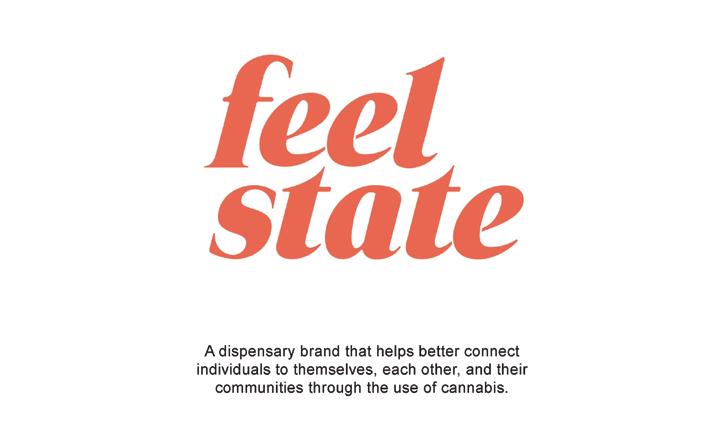
The True Cost of the Potency Tax
New York Pushes THC Tax as Cannabis Companies Fret Over Illicit Competition
By Aaron Smith
As New York continues to slow-step its way towards adult-use legalization, Gov. Andrew Cuomo is proposing a unique system for taxing cannabis based on potency.
Assuming the Democratic governor succeeds in his latest attempt to legalize recreational marijuana, New York would be the first state to levy a tax based on milligrams of THC. States typically base taxes on retail price, not the pot’s potency.
Taxing adult-use cannabis is part of Gov. Cuomo’s plan to dig New York out of its hole. The state is facing a multi-billion-dollar budget gap after the coronavirus pandemic ravaged the economy.
Meanwhile, the weed industry is on fire. Legal cannabis sales jumped more than $7 billion nationwide last year, to $17.9 billion, according to Leafly.com. In his State of the State Address on Jan. 13, Cuomo said legal cannabis will eventually create 60,000 new jobs, $3.5 billion in economic activity, and $300 million in tax revenue.
New York’s THC triple-tax: Can it compete against the illicit market?
New York’s adult-use cannabis faces three potential taxes: the potency tax, a state sales tax of 10.25%, and local sales tax. The proposed potency tax on flower is 0.7 cents per milligram of THC. Concentrates would be taxed at 1 cent and edibles would be taxed at 4 cents.
Adult-use cannabis is legal in 15 states and Washington, DC. The only other state with a potency tax is Illinois and it doesn’t work the same way. Illinois, which legalized recreational cannabis in 2020, imposes an extra tax on cannabis that is at least 25% THC.
In New York, the THC tax is intended to “accurately capture” the “true market value,” the budget says. But how will a triple-taxed industry hold up against tax-free competitors? The illicit market is thriving in New York, as evidenced by the smell wafting through Manhattan and Brooklyn. New York only allows processed weed. The flower smoked on the streets of New York is often smuggled from legal states with bumper crops, like California.
The potency tax is going too far, according to Patrik Jonsson, regional president for the East for Curaleaf, a multi-state cannabis company based in Massachusetts. Curaleaf is one of 10 cannabis companies operating in New York, and each of them is allotted four dispensaries.
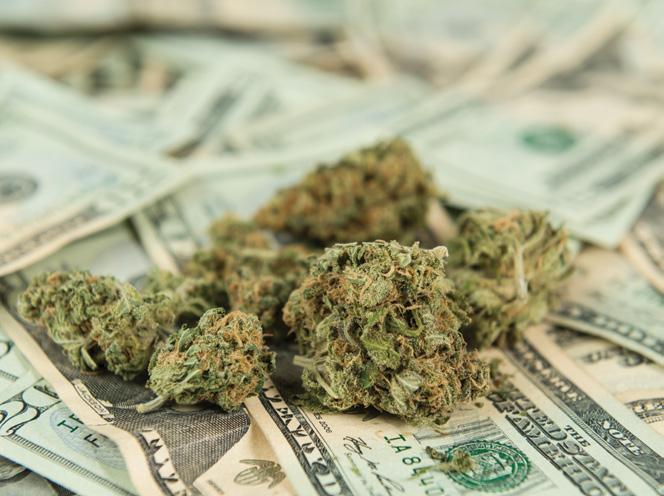
Jonsson said he’s opposed to the TCH tax because “heavy taxation helps to perpetuate the illicit market by creating an unfair advantage to an unregulated illegal segment of the industry.”
David Holland, executive and legal director of Empire State NORML, a pro-legalization organization, and co-founder of the NYC Cannabis Industry Association, said the THC tax could “defeat itself as a tax structure” because it would “drive the price of high potency marijuana to unaffordable levels.”
Cristina Buccola, a cannabis lawyer with the pro-legalization group Start SMART in New York, said the tax rate should be closer to 20%, to compete with the illicit market. Holland said the tax rate should be even lower, at 8%, to be competitive. They both agreed that, under Cuomo’s proposal, the real tax rate could be as
Nick Etten, vice president of government affairs for Acreage, a company with dispensaries in New York, New Jersey, and Illinois, described the 20% tax as the “high-water mark.”
“Of course we’re going to get taxed, but coming out of the gate it’s got to be reasonable,” he said. “The concern is that they’ll stick with the legacy [illicit] market if new adult-use cannabis is not affordable.”
The price difference could be kept narrow, at least in the beginning, if taxes were “phased in slowly and structured to help control consumer costs,” said Dr. Kyle Kingsley, founder and CEO of the cannabis company Vireo.
Don’t hold your breath for adult-use legalization in New York & New Jersey.
This is the third year that Cuomo has included his adult-use legalization plan in his budget, but it still hasn’t happened. New York and New Jersey are locked in a neck-to-neck turtle race to be the next to legalize adult-use on the East Coast, behind Massachusetts and Maine. But don’t hold your breath for adult-use. New York and New Jersey both have medical cannabis programs but have been slow to legalize adultuse, despite its popularity and the promises of politicians.
“My estimate is that we will not see a law on the books for at least a year,” said Dr. Allan Tiedrich, who has two clinics in New Jersey providing medical cannabis cards. “It’s too complicated. Jersey has Jersey politics. You have to line the pockets of the right people to get anything done.”
New Jersey voters approved recreational legalization in November 2020, and lawmakers were on the brink of finalizing legislation, when politicians butted heads over policy concerning under-aged use.
Jonsson of Curaleaf, which has dispensaries in New Jersey, said he’s hoping for adult-use retail to start in 2021. But Buccola and Holland estimated that adult-use retail could take 18 months to become a reality in New York and New Jersey.
“We hope that it doesn’t take a couple of years,” said Nick Etten, vice president of government affairs for Acreage, a cannabis producer with facilities in New York and New Jersey. “The reality is that [New York] is facing a budget shortfall. People want cannabis and every month or year that it goes forward that we’re not selling adult-use is revenue for the state that could be coming in the door.”
But cannabis presents a new frontier for the American regulatory process. Getting legislation right is tricky and time-consuming.
“We still need more investment in medical cannabis before adult-use can even roll-out,” said Chirali Patel, a cannabis lawyer and regulatory expert in New Jersey. “Many are optimistic that we will see adult-use sales soon and I’m sure the ATCs [alternative treatment centers] are already planning, but this isn’t a process to be rushed.”
Adam Goers, vice president of corporate communications for Columbia Care, which has a footprint in 17 states and Washington, DC, said New York should proceed carefully when considering such a complicated tax structure. But don’t take too long, he said, or investors will lose interest.
“If New York overthinks this, they could be in decision paralysis,” he said. ❖




Get discovered by more customers Sync POS integrations in real-time Boost sales with online pre-ordering Grow your brand & increase reach








